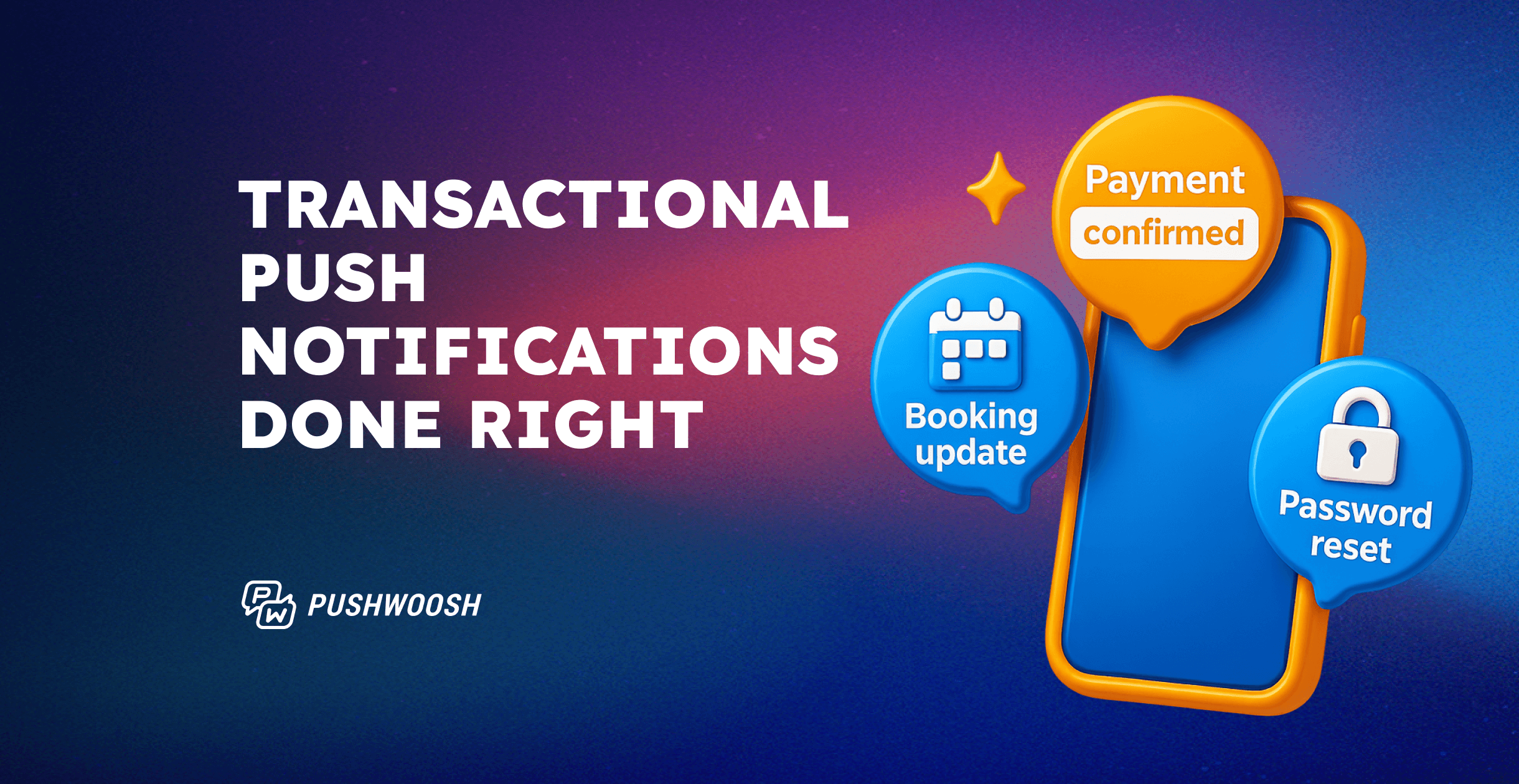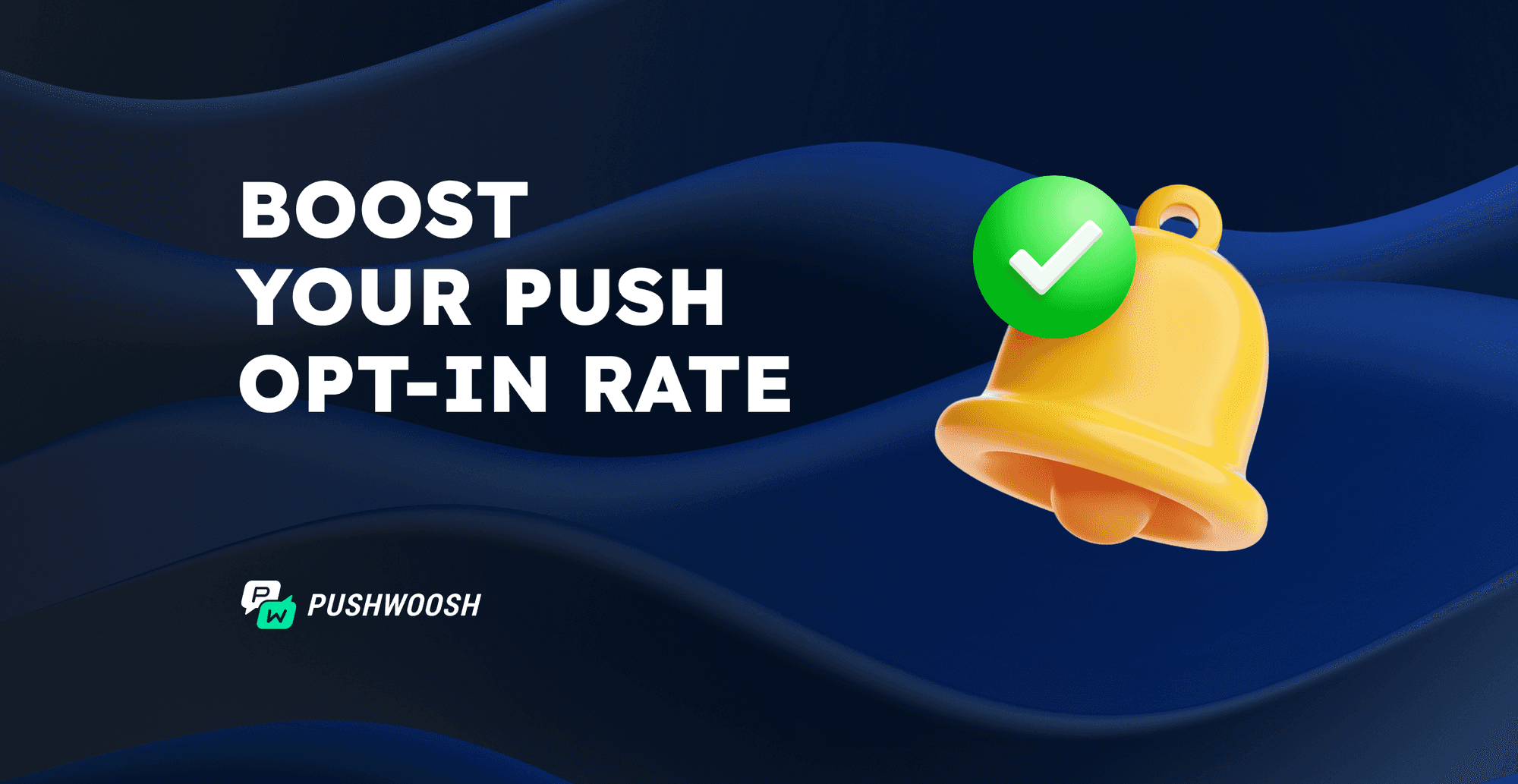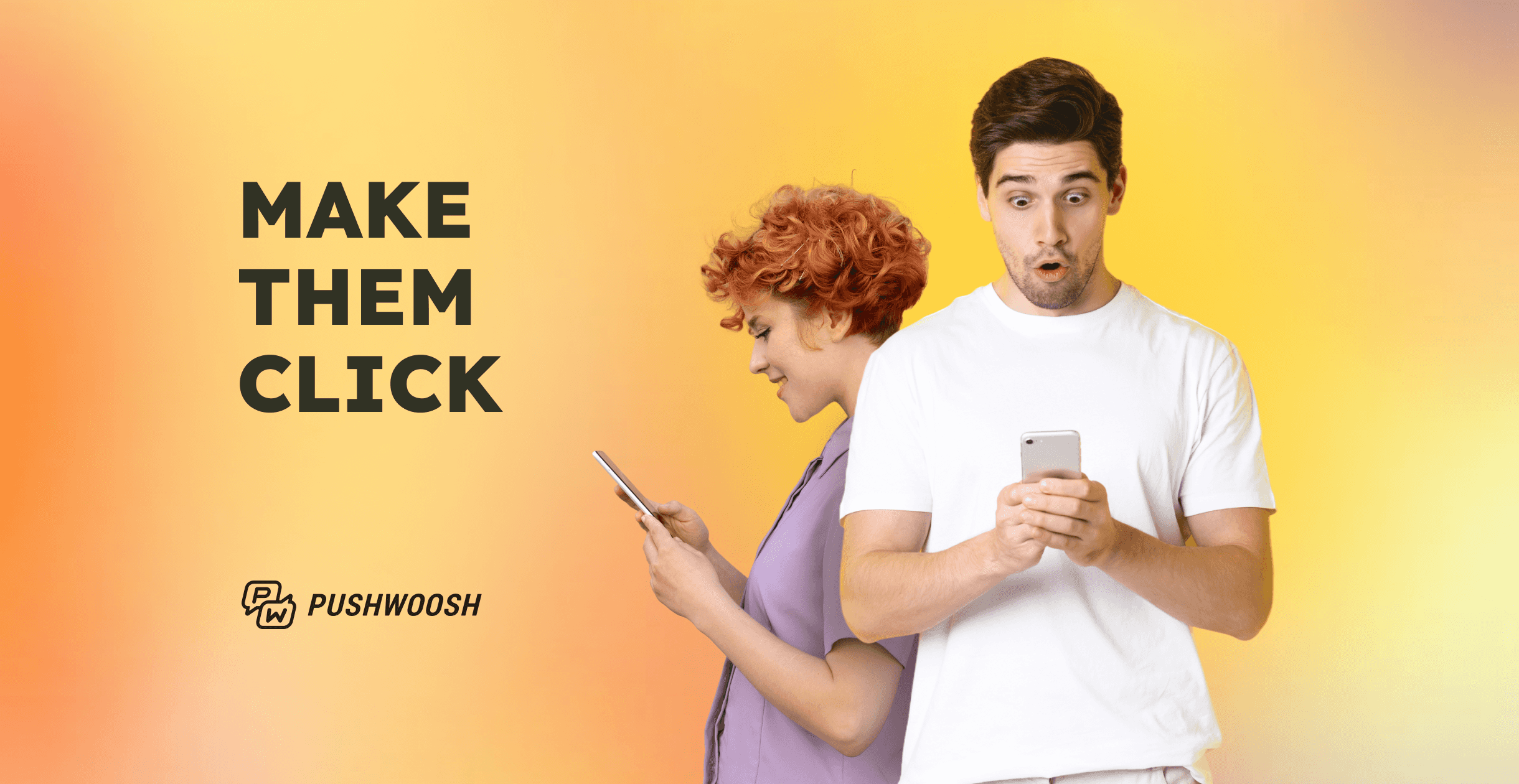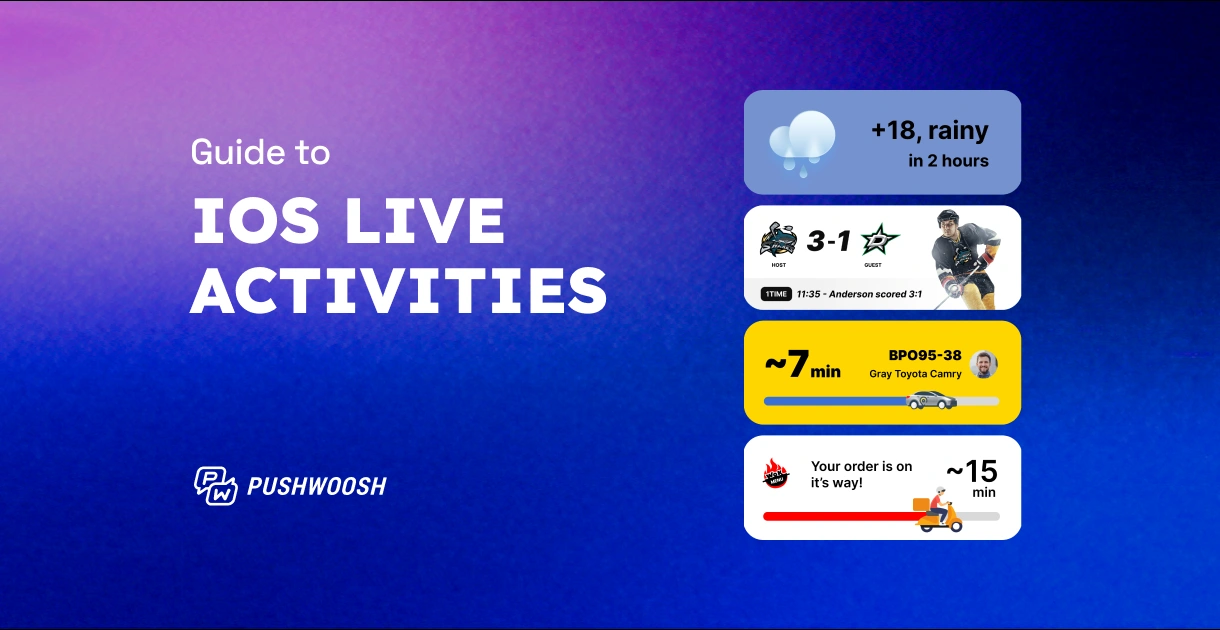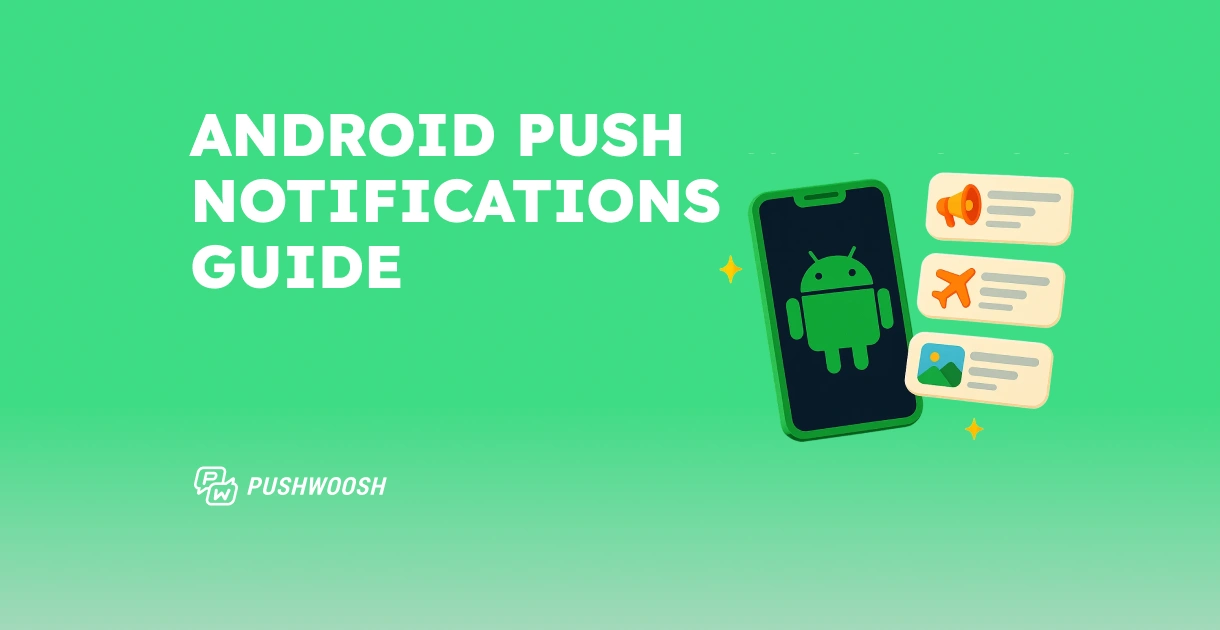Transactional push notifications: Examples & set up guide
What happens when your customers don’t get an order confirmation or password reset right away? Trust vanishes instantly — and so does their loyalty. Transactional push notifications prevent that by delivering time sensitive messages with critical information exactly when needed, reassuring users and keeping them informed. In this post, we’ll cover everything you need to know about transactional pushes, with examples of transactional messages & best practices.
With Pushwoosh, you can easily set up transactional notifications in minutes across multiple channels — including push notifications, email, SMS, and more.
What are transactional push notifications?
A transactional push notification is an automated message sent to an individual user in response to a specific trigger, event, or action. Think of them as the digital equivalent of a receipt, a boarding pass, or a gentle nudge that confirms, “We’ve got you covered.” Their primary purpose is to inform, not to sell. Because users expect to receive them, these messages have exceptionally high open and customer engagement rates.
The core characteristics of transactional messages are:
- Trigger-based: Sent automatically in response to a user’s action or a system event, such as placing a purchase, a password reset, or receiving a critical alert like a flight cancellation.
- Informational: The content is functional and provides essential information about an interaction.
- Personalized: Contains specific, personal details related to the user’s activity, such as order numbers or account details.
- One-to-one: Sent to an individual user, not a broad audience segment.
Integrating these notifications directly impacts your business by boosting user retention, enhancing the customer experience, reducing the load on your support team, and improving customer sutisfaction with timely communication.
Transactional vs. promotional notifications
At first glance, all push notifications might seem alike. But there’s a big difference between a transactional push and a promotional messages.
| Feature | Transactional push | Promotional push |
|---|---|---|
| Trigger | A specific user action or event (e.g., purchase, security alert). | A scheduled marketing campaign (e.g., new product launch, holiday sale). |
| Audience | An individual user (one-to-one). | A broad audience or user segment (one-to-many). |
| Purpose | To inform, confirm, or provide a necessary update. | To persuade, promote, or drive sales. |
| User expectation | High. The user is waiting for this time-sensitive information. | Varies. Can be seen as intrusive if not relevant or timely. |
👉 Key takeaway: Both types of push notifications are essential for a lifecycle communication strategy, but mixing them up is risky — it can confuse users and even lead to compliance issues.
Examples of transactional push notifications
Transactional push notifications show up differently depending on the industry. Here are the most common scenarios where they deliver value, trust, and smoother customer experiences.
E-commerce & retail
Order confirmation

Shipping updates

Back-in-stock alerts

Mobility & transportation
Trip status/confirmations

Trip receipt

Ride updates

Fintech & trading
Account & security alerts

Transaction notification

Market updates

Subscription apps
Subscription renewals/expirations

Appointments & bookings
Booking confirmation

Appointment reminder

Push vs. email vs. SMS for transactional communications
While this guide focuses on push notifications, a robust strategy often involves multiple channels, including transactional emails and SMS alerts.
| Channel | Best for | Strengths | Limitations |
|---|---|---|---|
| Push notifications | Real-time confirmations, time-sensitive messages | Instant delivery, rich content (images, buttons, deep links), cost-effective | Requires app opt-in, may be muted |
| Invoices, receipts, policy updates, long-form content | Permanent record, detailed info, easy to forward | Slower engagement, inbox competition | |
| SMS | Urgent alerts, backup for failed pushes | Near-100% open rate, works without internet, secure for critical data | Costly, limited formatting, user sensitivity to overuse |
Best practices for transactional push notifications
Send messages instantly with real-time triggers (set up guide)
Users expect immediate updates when they purchase, reset a password, or book a service. Every second of delay can erode trust.
Option 1 — API (fastest path from your backend):
The most common way to guarantee timely delivery is to connect your transactional messaging directly to backend events.
This approach is simple and effective, but it requires ongoing support from your development team to manage requests and keep communications running smoothly.
Option 2 — no ongoing dev lift (marketer-led):
If you don’t have the developer resources to maintain this process (or you want to put transactional communications fully into marketers’ hands), there’s an easier way.
Let’s put it into practice. Here’s how you can set up a transactional flow in Pushwoosh in minutes:
Example: Order confirmation
Step 1. Set up & sync data ⚙️
This is the only step where you’ll need one-time developer help.
The technical aspects: Integrate the Pushwoosh SDK into your app or website to track default events like order_created (or any custom event) with all required attributes (e.g., order_id).
Step 2. Set up trigger-based entry
Once events are successfully synchronized, go to the Customer Journey Builder and choose an Entry element with the relevant trigger event that will launch your communication. In our case, it’s order_created.

Step 3. Create the push message
Add a Push Notification element to the canvas and create your message.
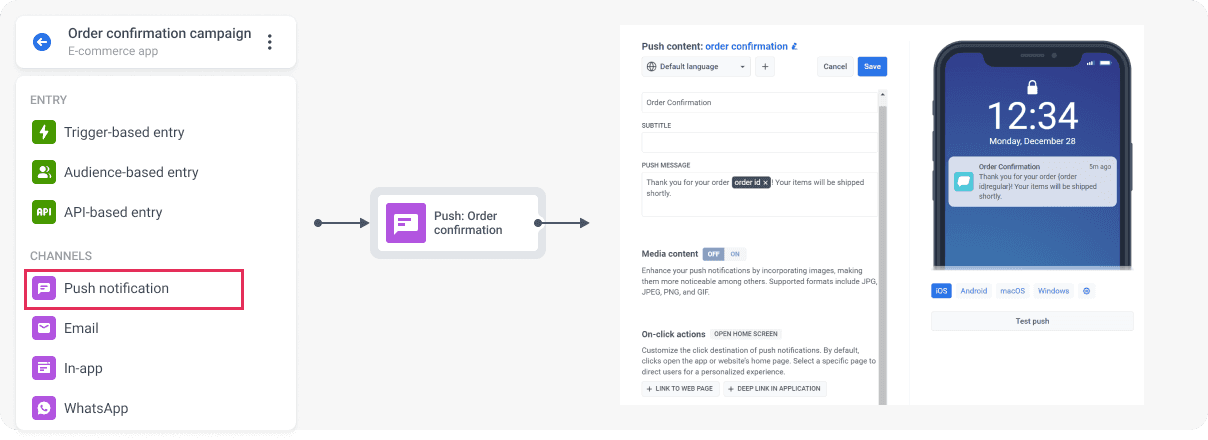
Step 4. Launch your campaign
Add an Exit element and start your campaign. From now on, every new purchase event will trigger an instant order confirmation push.
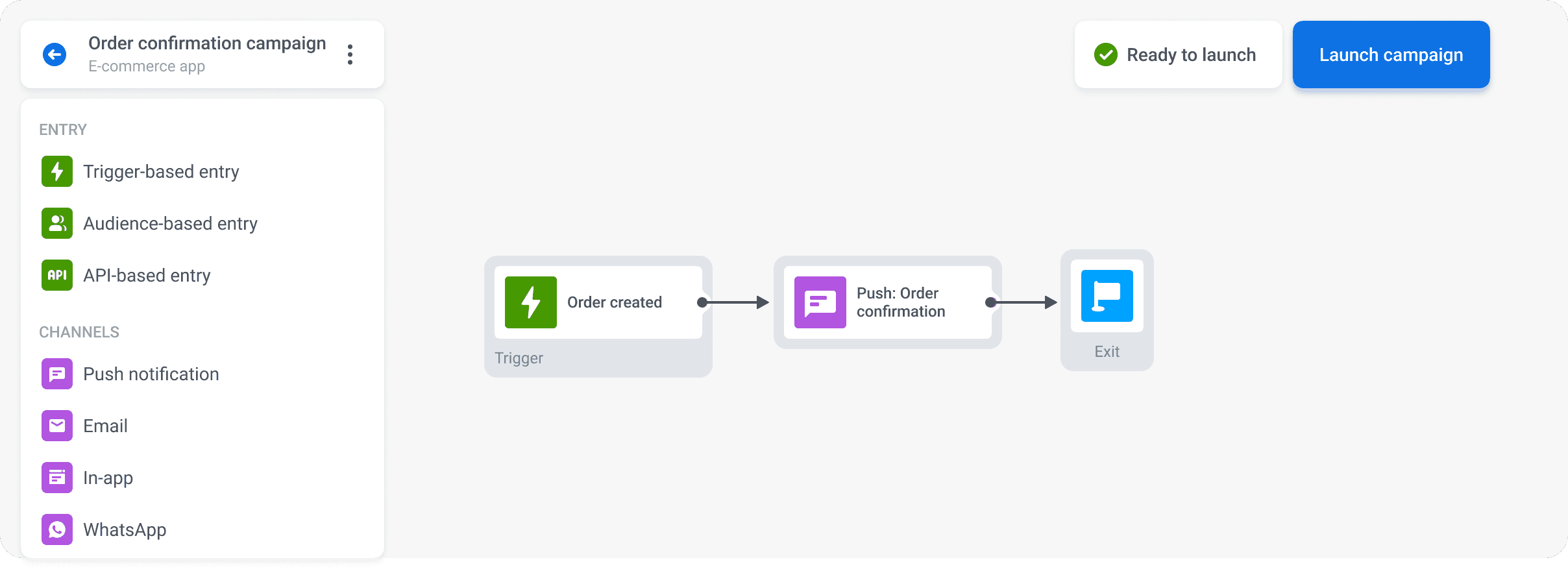
Personalize every notification with context
A simple push that says “Thank you for your purchase” does the job, but it leaves out valuable details.
No matter of the industry or use case, a transactional message should feel relevant, not generic. Add key information — like an order ID, amount, delivery date, or appointment time — to reassure users that the message is truly about their order, payment, or account.
Manage multiple transactions seamlessly
When you manage transactional messaging through a customer engagement platform’s interface (rather than via backend API events), you may face a situation where a single user has several processes running at once: multiple orders, bookings, or transactions.
Each action deserves its own confirmation or update, and your transactional messaging should reflect that.
Guarantee reachability across channels
Even the most perfectly timed push notification won’t work if the user never sees it. Device settings, connectivity issues, or simple inattention can cause critical updates to go unnoticed.
That’s why every transactional flow should have a built-in fallback. This way, you’re not relying on a single channel. A payment confirmation, ride update, or booking reminder will always find its way to the user on the channel they’re most likely to check.
Measure, test & optimize continuously
Don’t limit testing to marketing offers. Transactional notifications can benefit from optimization too.
Track performance data like delivery rates, open rates, and click-through rates to understand if the right messages reach users at the right time with the key information they expect.
Then, evaluate test results with built-in push performance statistics to see what drives the best engagement and optimize your communication. Even small tweaks, like testing subject lines or message length, can have a big impact on engagement.
This way, you’re creating a cycle of learning and optimization that strengthens trust and performance over time.
Build trust with every transactional push
Transactional push notifications are a critical trust builder in your customer journey. Make them personalized, timely, and omnichannel with Pushwoosh, and your users will always feel confident choosing your app.

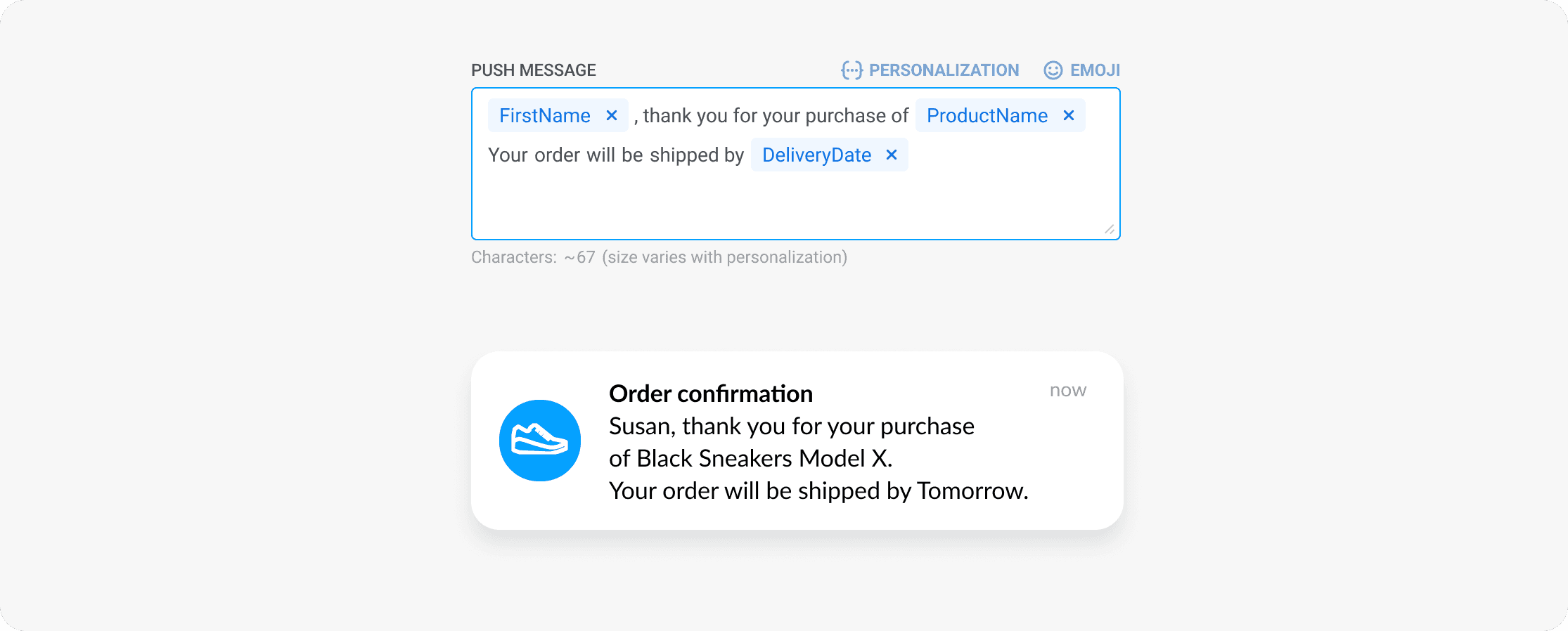
.png)
